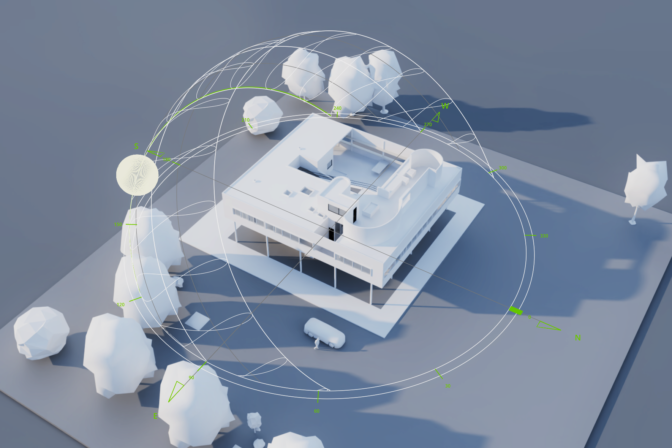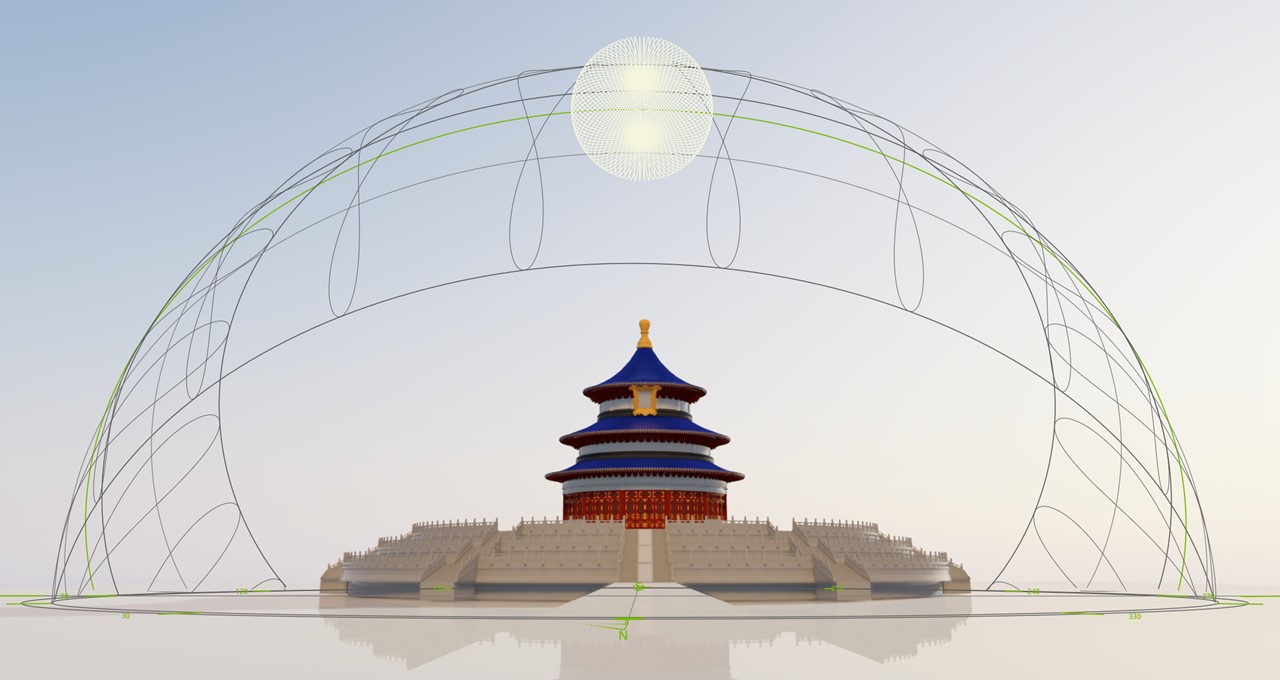Editor’s note: This post is a part of our Meet the Omnivore series, which features individual creators and developers who use NVIDIA Omniverse to accelerate their 3D workflows and create virtual worlds.
Things are a lot sunnier these days for designers looking to visualize their projects in NVIDIA Omniverse, a platform for creating and operating metaverse applications.

Pingfan Wu, a senior architectural researcher at the Hunan Architectural Design Institute (HNADI) Group in south-central China, developed an Omniverse extension that makes controlling the sun and its effects on scenes within the platform more intuitive and precise.
Wu has won multiple awards for his work with Omniverse extensions — core building blocks that let anyone create and extend functions of the Omniverse using the popular Python or C++ programming languages.
The “SunPath” extension lets users easily add, manipulate and update a sun-path diagram within the Omniverse viewport.
This enables designers to visualize how the sun will impact a site or building at different times of day throughout the year, which is critical for the architecture, engineering, construction and operations (AECO) industry.
“To achieve digitization in the AECO industry, the first task is to build a bridge for data interoperability between design tools, and the only platform that can fill this role is Omniverse,” Wu said. “Based on the Universal Scene Description framework, Omniverse enables designers to collaborate using different software.”
And the excellent rendering power of Omniverse makes the sunlight look very realistic, Wu added.
Award-Winning Omniverse Extension
The extension shined brightly in NVIDIA’s inaugural #ExtendOmniverse contest last fall, winning the “scene modifier or manipulator tools” category.
The competition invited developers to use the Omniverse Code app to create their own Omniverse extensions for a chance to win an NVIDIA RTX GPU.
Wu decided to join, as he saw the potential for Omniverse’s real-time, collaborative, AI-powered tools to let designers “focus more on ideas and design rather than on rendering and struggling to connect models from different software,” he said.
Many design tools that come with a skylight feature lack realistic shadows, the researcher had noticed. His “SunPath” extension — built in just over a month — solves this problem, as designers can import scenes to Omniverse and create accurate sun studies quickly and easily.
They can even use “SunPath” to perform energy-consumption analyses to make design results more efficient, Wu added.

More Wins With Omniverse
Participating in the #ExtendOmniverse contest inspired Wu to develop further applications of Omniverse for AECO, he said.
He led a team at HNADI, which includes eight members who are experts in both architecture and technology, to create a platform that enables users to customize AECO-specific digital twins. Dubbed HNADI-AECKIT, the platform extends an Omniverse Connector to Rhino, a 3D computer graphics and computer-aided design software.
It won two awards at last year’s AEC Hackathon in China: first prize overall and in the “Best Development of the Omniverse” track.
“The core technical advantage of HNADI-AECKIT is that it opens up a complete linkage between Rhino and Omniverse,” Wu said. “Any output from Rhino can be quickly converted into a high-fidelity, information-visible, interactive, customizable digital-twin scene in Omniverse.”
Learn more about HNADI-AECKIT:
Join In on the Creation
Creators and developers across the world can download NVIDIA Omniverse for free, and enterprise teams can use the platform for their 3D projects.
Discover how to build an Omniverse extension in less than 10 minutes.
For a deeper dive into developing on Omniverse, attend these sessions at GTC, a global conference for the era of AI and the metaverse, running March 20-23.
Find additional documentation and tutorials in the Omniverse Resource Center, which details how developers like Wu can build custom USD-based applications and extensions for the platform.
To discover more free tools, training and a community for developers, join the NVIDIA Developer Program.
Follow NVIDIA Omniverse on Instagram, Medium, Twitter and YouTube for additional resources and inspiration. Check out the Omniverse forums, and join our Discord server and Twitch channel to chat with the community.
